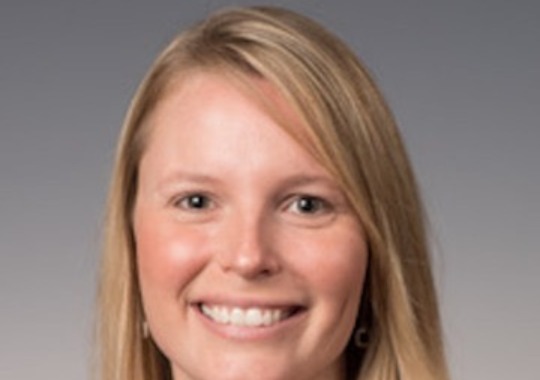
2021 Authors

Stacey Armstrong
Assistant Professor, Social Sciences
Adolescent Coping: In-Person and Cyber-Victimization
Co-Authors: Sarah Domoff, Eric Dubow
The purpose of this study was to compare the use and effectiveness of coping strategies in both in-person and cyber-victimization contexts in a sample of adolescents (N = 321; 11-15 years old) in the United States.

Michael Berghoef
Professor, Social Work
Contextualizing Latinx Genocide Studies Utilizing the Shoah Visual History Archive
Co-Author: Cruz Maria Morales
In this presentation, the concepts of genocidal thinking, hate grooming, secondary trauma, vicarious trauma, and vicarious resiliency were defined and contextualized developmentally, as they relate to genocide and mass atrocity studies with particular focus on sometimes underrepresented Latin American history. Creative ways the archive is currently being used in social work education in Latinx contexts were presented and discussed.
Anti-Racist Pedagogy: Linking Past to Present through the Jim Crow Museum of Racist Memorabilia
These sessions consisted of touring the Jim Crow Museum discussing ways that the collection has been used to enhance a wide variety of social work education over the past 20 years.

Ann Breitenwischer
Librarian/Professor, Research & Instruction Services
How to Build Networks and Make Professional Connections that Matter
Co-Authors: Sela Constan-Wahl, Jody Gardei, Deedee Stakley
This session will introduce participants to the concept of a Personal Board of Directors, help them identify people for their PBOD...from the abstract. This is mentoring in another way.

David Bright
Associate Professor, College of Pharmacy
Precision Pharmacotherapy: Integrating Pharmacogenomics into Clinical Practice
The American College of Clinical Pharmacy periodically assembles teams of individuals to collaboratively produce White Papers on behalf of the organization. The field of pharmacogenomics, or the intersection between human genetics and medication use, is rapidly evolving. In order to operationalize the science of pharmacogenomics to make meaningful change in patient care, models for integrating pharmacogenomics into pharmacy practice must be shared. A team developed guidance for implementing pharmacogenomics services, educational support, and research opportunities.
Evaluation of an American Sign Language Co-Curricular Training for Pharmacy Students
Co-Authors: Nicole Bailey, Patricia Kaarto, Minji Sohn
This article describes the work of Nicole Bailey, a Ferris pharmacy student, in leading a team of pharmacy students and faculty through the implementation of an American Sign Language (ASL) co-curricular training for pharmacy students at Ferris. In collaboration with Deaf and Hard of Hearing Services, curriculum and assessments were built and the co-curricular course was first offered during Spring semester 2019. Following the course, students reported significantly improved confidence in communicating with d/Deaf patients directly and with a translator.

Karen Carter
Professor, KCAD Art History
Confronting Racial Stereotypes in Graphic Design History
A book chapter that analyzed the success and challenges of classroom activities in a History of Graphic Design course that enhanced students’ awareness of racial stereotypes in publicity of the past and the contemporary moment.
Maximilien Luce’s La Rue Mouffetard: Paris as Spectacle and Disenchantment
A paper presented at the 45th annual Nineteenth-Century French Studies Colloquium in Sarasota, Florida. The paper interpreted Maximilien Luce’s painting, La Rue Mouffetard (1889-1890), as representing a critique of the encroachment of commercial publicity and bourgeois spectacle into the predominantly working-class and politically radical neighborhood.

Daniel Ding
Professor, Languages and Literature
The Historical Roots of Technical Communication in the Chinese Tradition
This book traces Chinese technical communication from its beginnings, investigating how it began and the major factors that shaped its practice. It also looks at the major philosophical and historical traditions in Chinese technical communication, and how historical and philosophical threads play out in contemporary Chinese technical communication practice. In considering such issues, the book gives attention to some of the major classical Chinese texts, but treats them as artifacts of technical communication. It explores the roots of Chinese technical communication, reviews traditional philosophy that has shaped such practice, discusses the key links in the history of Chinese technical communication, and recounts historical roots and contemporary practice side by side. It provides the reader with compelling perspectives on the historical roots of Chinese technical communication.
Thomas Dowling
Assistant Dean/Professor of Development & Research, College of Pharmacy
Defining the Role of Pharmacists in the Evolving Treatment Landscape for Anemia in Kidney Disease
Kidney disease is highly prevalent in the US, impacting nearly 15% or 37 million people. It is often under-diagnosed, where 1 in 9 people with kidney disease do not know that they have it. The onset of anemia is one of the hallmarks having chronic kidney disease (CKD). This presentation described the critical role that pharmacists play in helping to manage people with CKD-related anemia. Pharmacists work closely with physicians and other members of the medial team as part of collaborative practice agreements that are specific for anemia management. In the future, pharmacists will play a greater role in managing newer therapies for the treatment of CKD-related anemia into existing treatment regimens.

Lisa Eshbach
Professor, Management Department
Keweenaw Mountain Lodge: An Opportunity Worth Pursuing?
Co-Author: Nancy Levenburg
The case portrays a seasoned, entrepreneurial couple who is contemplating making an offer to buy the Keweenaw Mountain Lodge (KML) property, located in Michigan’s Upper Peninsula. It provides a step-by-step analysis of the considerations involved in making a purchase decision – i.e., marketing, location and local demographics, marketing positioning, operations and management, succession planning, and financial valuation. It requires the reader to utilize the planning, analytical, and decision-making techniques of an entrepreneur investigating a new business opportunity.
Lean Higher Ed Global Festival 2020: Developing & Assessing Student Team Lean Experiential Projects.
Co-Authors: Kaylee Burke, Tyler Glynn, Jennifer Hegenauer, Courtney Slater
The presentation shared how the PDCA tool is used to develop, effectively manage and assess a high-quality, experiential student team project within a lean course. Participants learned 1) The process of coordinating and managing a real lean student team project. 2) Effective techniques that utilize objective assessment for an application-based project. 3) The value of using the PDCA tool from the instructor, student, and partner's perspective and 4) How applying theory to practice supports student learning and a sponsor's workplace objectives.

Deirdre Fagan
Associate Professor, Languages And Literature
Have Love
Have Love is a collection of poetry beginning and ending with love, but not the same love. Beginning youthfully, the poems move through marriage, divorce, remarriage, birth, illness, and death to survival. There is romantic and familial love, and some that is not love. We go on, often reluctantly, haltingly, but we go on. Have Love reminds its readers we do not have to "mate for life" to give and receive love, nor does new love have to undo what has been before. Where there is love, there is love.
Notre Amour, Comme une Pomme, Vient de la Terre (Our Love, Like an Apple, Comes from the Earth)
Michigan writers were invited to create original ekphrastic poems based on one of ten selected works of art from the Muskegon Museum of Art’s permanent collection in this year’s Art Talks Back poetry contest. The competition ran January 24 through March 28, 2019.

Lori Faulkner
Associate Professor, KCAD Fashion Studies
Storytelling Beyond Words: Kendall College of Art and Design Fashion Studies and Circle Theater
Traveling to foreign countries gives students a new perspective which is important to their development of design aesthetic and purpose. Hong Kong, Guangzhou, Beijing, Shanghai Fashion Week Trip was presented publicly at the All College Meeting on January 8, 2019 at Kendall College of Art & Design to showcase the work being done by KCAD Fashion Studies in coordination with the Daniel & Pamella DeVos Foundation. This slide presentation documents the study of the Hong Kong/Chinese Fashion Industry. This trip focused on both the retail and manufacturing of apparel and accessories for the fashion industry. The exploration of goods for production and retail for the Chinese market was compared to importing for retail in the US and other countries. Attending Chinese Fashion Week in Beijing, China, gave the students an opportunity to talk to designers from small and large companies across the world sharing ideas. A special emphasis on sustainability was covered while attending the “Establishing New Ecosystems for Sustainable Development of the Fashion Industry,” presented by the Beijing Fashion Forum.

Heather Girand
Professor, College of Pharmacy
Attention-Deficit/Hyperactivity Disorder and Psychotropic Polypharmacy Prescribing Trends
Co-Authors: Szymon Litkowiec, Minji Sohn
This cross-sectional study assessed annual rates of ADHD medication prescribing and psychotherapeutic polypharmacy among patients 2 to 24 years old from 2006 to 2015, identified commonly prescribed ADHD medications and concomitant psychotropics, and evaluated factors associated with polypharmacy. ADHD medication prescribing rates and psychotherapeutic polypharmacy increased significantly during the study period. Factors associated with polypharmacy included age, nonprivate insurance, mental health counseling or psychotherapy, and calendar year.
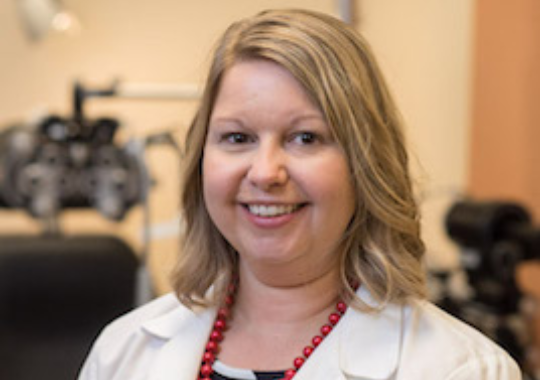
Sarah Hinkley
Professor, Michigan College of Optometry
Optometric Referral Rates for Low Vision Rehabilitation Services
Co-Authors: Trang Nguyen, Ashley Tessier
An anonymous 13-question survey was administered to various vision rehabilitation professionals via an electronic survey asking them to assess their level of agreement with statements related to low vision (LV) rehabilitation optometry, with 44 respondents. The majority strongly agree that LV optometrists serve an important function in caring for patients with LV (90.91%). 97.72% of respondents agree or strongly agree with the statement that there is a shortage of LV optometrists. The survey demonstrates agreement that LV optometry serves an important role in providing care for the patient with LV.
Use of Interprofessional Poverty Simulations to Build Empathy and Teamwork Among Healthcare Program Students
Co-Author: Lisa Salvati
Creating an IPE taskforce began with two faculty, one in pharmacy and one in optometry, who were passionate about the need for a more cohesive university effort to encourage IPE. Since the creation of the taskforce in 2017, it has met monthly with engaged membership. Accomplishments include mission and objective creation, identification of potential barriers and possible solutions, grant writing, survey creation, poverty simulation events, simulation lab work group support, and planning large, collaborative IPE activities among the colleges and programs.

Henry Wai Leong Ho
Associate Professor, Marketing Department
Are We Making a Difference? Rural University Students’ Perceptions of Diversity and Inclusion
Co-Author: Catherine Browers
Recent demographic trends indicate that the evolving workforce will increasingly comprise a variety of cultures, belief systems, and ethnic populations. As future professionals in a global environment, post-graduate business students must understand the increasing importance of differences they will encounter. The purpose of this study is to understand business students’ perceptions of diversity and inclusion during their academic experience in a rural university in west-central Michigan, USA. The research design was descriptive, and the research was conducted using a quantitative method of surveying. Any students currently pursuing their qualification at College of Business comprised the target population. A total of 349 students responded to the survey. The respondents ranging in age from 18-24 years responded to Likert scale and nominal questions regarding their perceptions on diversity and inclusion. Although mostly positive, business students shared that some of the current programs could be improved. These perceptions provide constructive data for use in evaluating and amending current diversity and inclusion programs and suggestions for future research are offered based on the study’s findings.
How Can We Serve You Better: Customers’ Perceptions of Services and Facilities Offered in a Community Library
The purpose of this study is to understand residents’ perceptions of the Big Rapids Community Library (BRCL). The study uses a quantitative online survey to investigate the perceptions of local residents who use this community library. The survey focuses on questions directly related to the services and facilities offered to BRCL customers. The results of the survey indicate that residents’ income levels affect their visits to the library. In addition, female residents view access to a community library as more important than their male counterparts do. This project has important policy implications for BRCL and other community libraries because data on customers’ perceptions and satisfaction are increasingly being used to motivate service reforms, budget allocations, and management accountability. In addition, this intention by BRCL can be treated as a “best practice” model for other community libraries trying to build better relationships with their customers.
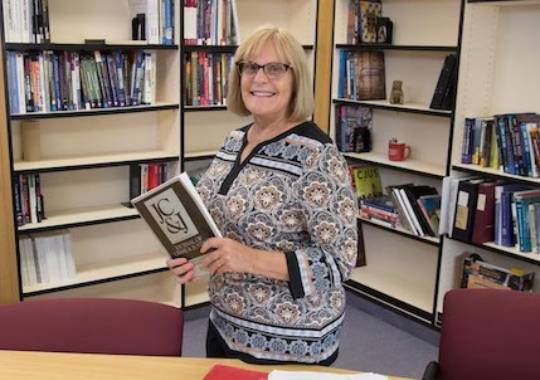
Nancy Hogan
Professor, Criminal Justice
A Gendered Career Stage Model to Explore Turnover Intent Among Correctional Officers
Co-Authors: Marie Griffin, Eric Lambert, Natalie Todak
Understanding the factors that lead to correction officer turnover intent is vital. Using a gendered career stage model, this study focused on male and female correctional officers similarities and differences in workplace variable effects on turnover intent across career stages. The results indicated that organizational commitment was a consistent predictor of turnover intent for all correctional officers at all stages, and at various other stages, quality of supervision, co-worker support, and safety concerns affected both males and females. Male officers were more likely to leave at all career stages, with the impact of job stress and role ambiguity influencing male turnover intent.
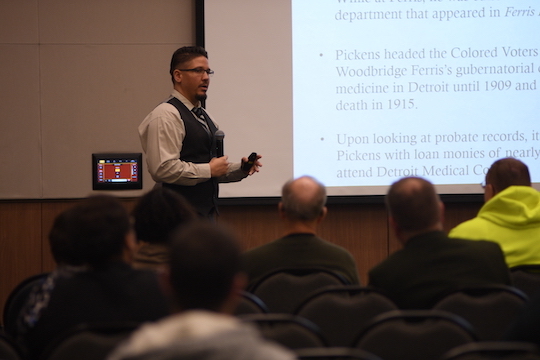
Franklin Hughes
Video, Graphic & Media Spec, Diversity and Inclusion
Haste to Rise: A Remarkable Experience of Black Education during Jim Crow
Co-Author: David Pilgrim
Between 1910 and the mid-1920s, more than sixty black students from the South bravely traveled north to Ferris Institute, a small, mostly white school in Big Rapids, Michigan. They came to enroll in college programs and college preparatory courses—and to escape, if only temporarily, the daily and ubiquitous indignities suffered under the Jim Crow racial hierarchy. They excelled in their studies and became accomplished in their professional fields. Many went on to both ignite and help lead the explosive civil rights movement. Very few people know their stories—until now. Haste to Rise is a book about the incredible resilience and breathtaking accomplishments of those students. It was written to unearth, contextualize, and share their stories and important lessons with this generation. Along the way we are introduced to dozens of these Jim Crow–era students, including the first African American to win a case before the U.S. Supreme Court, Belford Lawson, the lead attorney in New Negro Alliance v. Sanitary Grocery Co. (1938), a landmark court battle that safeguarded the right to picket. We also meet one of Lawson’s contemporaries, Percival L. Prattis, a pioneering journalist and influential newspaper executive. In 1947, he became the first African American news correspondent admitted to the U.S. House and Senate press galleries. There is also an in-depth look into the life and work of the institute’s founder, Woodbridge Nathan Ferris, a racial justice pioneer who created educational opportunities for women, international students, and African Americans. Haste to Rise is a challenge to others to look beyond a university’s official history and seek a more complete knowledge of its past. This is American history done right!

Steven Hundersmarck
Associate Professor, Criminal Justice
Thinking Through Video
Co-Author: Michael Vasicek
The presentation focused on the use of video in an online format. The videos were used in a novel manner to create thinking in a new report writing course. In the past video has been used as a passive tool. The new use of video includes video that captures or creates the difficulty of making sense of information and recording it in a police report for new students.
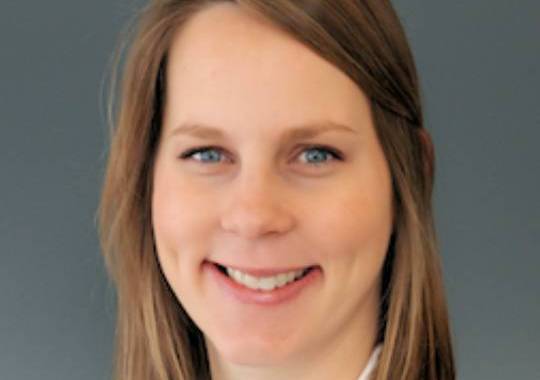
Alison Jenerou
Associate Professor, Michigan College of Optometry
Vision Therapy Structure and Oculomotor Skills
During the Korean Optometric Association spring 2019 meeting in Seoul, South Korea, Dr. Jenerou presented to local eye care providers. The presentations included a keynote speech covering Presbyopia and Convergence Insufficiency. In addition, four hours of presentations covering Vision Therapy and Oculomotor Dysfunction. A translator was utilized to interpret the presentations to attendees either simultaneously or sequentially.
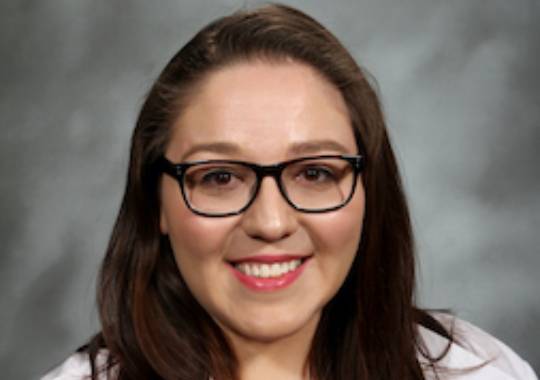
Tayler Jones
Pharmacy Student, College of Pharmacy
Dissolution of Antidepressant Medications in a Vertical Sleeve Gastrectomy (VSG) Dissolution Simulation
Co-Authors: Kim Hancock, Minji Sohn
Vertical sleeve gastrectomy (VSG) is a surgical weight loss option for bariatric patients. Volume and pH, which can affect drug dissolution, change following the VSG procedure. Antidepressants have a high incidence of use in bariatric patients pre and post-surgery. The purpose of this study was to determine the effect of pH and volume on the dissolution of sertraline and venlafaxine. Institutional review board approval was not necessary for this simulation study. Nonsurgical (pH 1.6, 900 mL) and VSG conditions (pH 5.8, 100 mL) were simulated using a dissolution apparatus with two different vessels and paddles and creating simulated gastric media, which contained lecithin, sodium taurocholate and sodium chloride. The paddle speed and water bath temperature remained constant at 75 revolutions per minute (RPM) and 37 degrees Celsius across all four conditions. The paddle speed was determined following an additional study on the effect of paddle speed on drug dissolution. Sertraline 50 mg tablets and venlafaxine 75 mg tablets were placed in the dissolution apparatus for 25 minutes. The concentration of drug in the vessel was determined and extrapolated using the UV-Vis spectrophotometry at the optimal wavelength, which varied depending on the drug. Data was expressed as percentage of dose dissolved with 95 percent confidence intervals. The percentage of dose dissolved for sertraline was 76.80 percent at pH 1.6 and 100 mL (standard deviation equals 3.83), 78.29 percent at pH 1.6 and 900 mL (standard deviation equals 2.41), 53.94 percent at pH 5.8 and 100 mL (standard deviation equals 11.90), and 55.74 percent at pH 5.8 and 900 mL (standard deviation equals 2.78). The percentage of dose dissolved for venlafaxine was 49.02 percent at pH 1.6 and 100 mL (standard deviation equals 12.82), 107.57 percent at pH 1.6 and 900 mL (standard deviation equals 2.54), 64.72 percent at pH 5.8 and 100 mL (standard deviation equals 15.19), and 108.02 percent at pH 5.8 and 900 mL (standard deviation equals 6.87). Volume had a significant effect on venlafaxine dissolution (95 percent CI, P less than 0.001), with pH possibly playing a role depending on the volume (95 percent CI, P equals 0.3273); however, for sertraline, pH had a significant effect on drug dissolution (95 percent CI, P less than 0.001) and volume did not (95 percent CI, P equals 0.6791). The change in stomach conditions did effect the dissolution of antidepressant medications. The results indicated a potential for subtherapeutic dosing antidepressants in VSG patients; therefore, aggressive dosing should be considered, and confirmed, through clinical studies in this patient population.
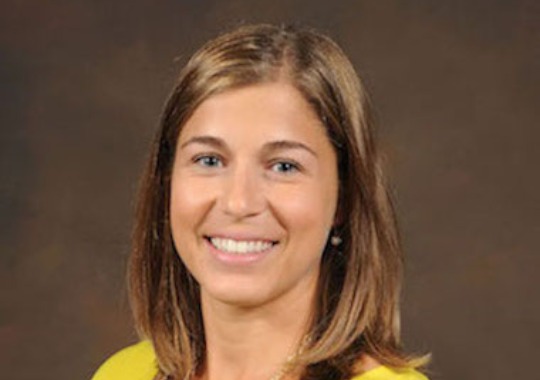
Jennifer Lamberts
Associate Professor, College of Pharmacy/ Pharmaceutical Sciences
Purine Molecules in Parkinson's Disease: Analytical Techniques and Clinical Implications
Co-Author: Sky Pike
This is a scholarly review article published in a peer-reviewed academic journal. The article was written together with four students and another Ferris faculty colleague, Dr. Sky Pike.

Cheolwoo Lee
Professor, Accountancy, Finance & Information Systems Dept.
Sustainability of Analyst Recommendations in Multiple Lead Underwriter IPOs
Co-Authors: Jin Q Jeon, Juyoun Ryoo
Recently, a new organizational form of syndicate—multiple lead underwriter (MLU) initial public offerings (IPOs)—has emerged in IPOs. In addition to the increased deal complexity, lead underwriters in MLU IPOs face a new competition between them after underwriter selection, which is not present in single lead underwriter (SLU) IPOs. It is therefore questionable whether recommendations by analysts from lead underwriters of the MLU IPOs are as sustainable as those of the SLU IPOs. We examine IPO recommendations to capture how this new syndicate structure affects analyst behavior in terms of analyst optimism and investment value. In contrast to the popular conflict of interest perspective, our findings point to the notion that the new syndicate structure suppresses bias in recommendations and that reputation upholding incentive dominates pressure from competition. MLU-affiliated analysts are not more optimistic and provide more informative research coverage whose informativeness, however, fades away shortly after the recommendation releases. Our findings overall indicate the existence of sustainability in the MLU IPO recommendations.
Centrality and Corporate Governance Decisions of Korean Chaebols: Social Network Approach
Co-Authors: Jin Q Jeon, Chan-Kyoo Park
Almeida et al. (2011) show how Korean chaebols are formed using the critical control threshold centrality. In this paper, we take a one step further by exploring how chaebols make corporate governance decisions—going public, staying private, and being divested—after chaebol formation. We introduce the social network theory to operationalize centrality in the context of the organizational structure of a business group: specifically, the degree centrality, the Katz centrality, and the Hub/Authority centrality. We find that firms with high centrality are more likely to go public while firms with low centrality are more likely to stay private or be divested. In addition, firms invested by other group firms tend to stay private and firms without substantial equity stake in other group firms tend to be divested. Firms directly owned by the controlling family are more likely to stay private and less likely to be divested. We calibrate centrality based on the social network theory and explore how Korean chaebol system evolves for survival and prosperity.
Multiple Credit Rating: Triple Rating under the Requirement of Dual Rating in Korea
Co-Authors: Jin Q Jeon, Juyoun Ryoo
The paper investigates a unique phenomenon where triple rating gained popularity while dual rating is required in Korea. Triple rating may improve information production by introducing increased competition among CRAs (credit rating agencies) while it may exacerbate rating inflation through more rating shopping and rating catering on the ground of greater bargaining power shifted toward the issuer. We examine the effect of triple rating on rating inflation, information production, and rating changes. Triple rating on average has a lower rating and a greater information production effect than dual rating after controlling for endogeneity. The rating level appears to be a significant factor in shaping the future rating mandates in triple rating. The propensity that splits are resolved through rating upgrades in triple rating significantly existed but has noticeably faded away since the strict regulatory changes in 2009.

Eric Nybo
Associate Professor, College of Pharmacy/ Department of Phharmaceutical Sciences
Design of a Disaster Preparedness Escape Room for First and Second-Year Pharmacy Students
Co-Authors: Michael Klepser, Stephanie Klepser
A bioterror preparedness escape room was developed for pharmacy students in a health elective course. The instructional objectives of training students in disaster preparedness were assessed via group readiness assessment tests in the scenario and individual readiness assessment tests after the completion of the activity.
Design of a Large-Scale Escape Room for First-Year Pharmacy Student Orientation
Co-Authors: Katie Axford, Michelle Sahr, Mark Young
An escape room was developed for first professional year student orientation in a large classroom setting. One hundred nineteen students participated simultaneously in the orientation escape room activity in break-out groups to accomplish the objectives of the escape room as measured by embedded assessments.
Pathway Engineering of Anthracyclines: Blazing Trails in Natural Product Glycodiversification
Co-Authors: Katelyn Brown, Mikko Metsä-Ketelä, Benjamin Niji Wandi
The anthracyclines are structurally diverse anticancer natural products that bind to DNA and poison the topoisomerase II–DNA complex in cancer cells. Rational modifications in the deoxysugar functionality are especially advantageous for synthesizing drugs with improved potency. Combinatorial biosynthesis of glycosyltransferases and deoxysugar synthesis enzymes is indispensable for the generation of glycodiversified anthracyclines. This Synopsis considers recent advances in glycosyltransferase structural biology and site-directed mutagenesis, pathway engineering, and deoxysugar combinatorial biosynthesis with a focus on the generation of “new-to-nature” anthracycline analogues.

Glen Okonoski
Professor, School of Digital Media
"Hallelujah" for Hope
The video features a virtual performance including members of the Grand Rapids Symphony and affiliates. The Symphony describes the piece and performance as follows: In these trying times, we need music more than ever. When we share music, we share our strength, our hope and our joy with each other. That’s why musicians of the Grand Rapids Symphony and Chorus have joined together to create a very special, virtual performance of the “Hallelujah" Chorus from Handel’s Messiah just for you. Please enjoy this gift of hope, from our homes to yours.

David Pilgrim
Vice President of Diversity, Inclusion, & Strategic Initiatives, Diversity and Inclusion Office
Haste to Rise: A Remarkable Experience of Black Education during Jim Crow
Co-Author: Franklin Hughes
Between 1910 and the mid-1920s, more than sixty black students from the South bravely traveled north to Ferris Institute, a small, mostly white school in Big Rapids, Michigan. They came to enroll in college programs and college preparatory courses—and to escape, if only temporarily, the daily and ubiquitous indignities suffered under the Jim Crow racial hierarchy. They excelled in their studies and became accomplished in their professional fields. Many went on to both ignite and help lead the explosive civil rights movement. Very few people know their stories—until now. Haste to Rise is a book about the incredible resilience and breathtaking accomplishments of those students.

Avesh Raghunandan
Professor, Michigan College of Pharmacy
Fundamentals of Binocular Vision
This e-book was been developed as a resource primarily for students of Optometry and Vision Science. It is intended to augment theoretical principles and discussions of fundamental concepts pertaining to the binocular mechanisms comprising the human visual system. Conceptual discussions of fundamental processes have been augmented with relevant illustrations, graphical presentations and clinical applications to enhance the understanding of key concepts and to facilitate the translation of these concepts to appropriate clinical contexts. Users will benefit from the additional advantages provided by the iBook platform (highlighting, glossary, creation of customized study cards, etc) to enhance the learning and reading experience offered by this resource.
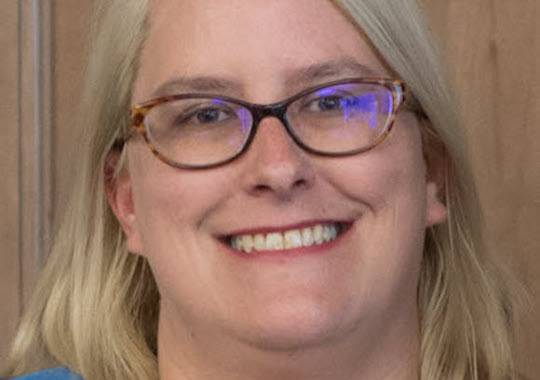
Dejah Rubel
Associate Professor, Collections and Access Services
No Need to Ask: Creating Permissionless Blockchains of Metadata Records
This article will describe how permissionless metadata blockchains could be created to overcome two significant limitations in current cataloging practices: centralization and a lack of traceability. The process would start by creating public and private keys, which could be managed using digital wallet software. After creating a genesis block, nodes would submit either a new record or modifications to a single record for validation. Validation would rely on a Federated Byzantine Agreement consensus algorithm because it offers the most flexibility for institutions to select authoritative peers. Only the top tier nodes would be required to store a copy of the entire blockchain thereby allowing other institutions to decide whether they prefer to use the abridged version or the full version.

Sara Searfoss
Pharmacy Student, College of Pharmacy
Novel Peroxisomal Proliferator Activated Receptor Agonist as a Promising Treatment for Alzheimer's Disease
Co-Authors: Veronica Anderson, Jessica Burkey
Purpose: Current medications for Alzheimer’s disease (AD) fail to stop the growth of near epidemic numbers of new patients with Alzheimer’s disease. Thus, there is a significant need for novel drug discovery for AD. We have developed a novel peroxisomal proliferator activated receptor, (PPAR-gamma) agonist to avoid the harmful effects on human health observed with current TZDs. In addition, our lead compound displays good blood brain barrier permeability, and thus improves behavioral deficits in mouse models of AD. Methods: A collaborative relationship between Auburn University, Department of Drug Discovery and Development and Ferris State University College of Pharmacy has discovered a promising new therapeutic agent for AD. Advanced drug discovery methodologies were used to design, synthesize, and purify the promising lead molecules prior to in vitro and in vivo analysis. Schrodinger software was utilized to design novel molecules in the AF2 ligand binding domain of human PPAR-gamma. Design of molecules involved the avoidance of interaction with tyrosine-473 in the AF-2 ligand binding domain of PPAR-gamma resulting in the development of a new non-traditional selective PPAR-gamma agonist. Ranking of compounds based upon computational based docking scores allowed for the development of lead compounds from a screen of more than 30,000 compounds. High performance liquid chromatography, mass spectrometry, and nuclear magnetic resonance spectroscopy analysis confirmed the structure prior to pharmacologic analysis. 3xTgAD mice containing mutant human APP (Swedish double mutation; K670N, M671L) and MAPT (P301L) as well as Psentm1Mpm were used for the current behavioral studies. 3XTgAD mice at 6 months in age were treated daily (5mg/kg) for 30 days. Y-Maze and Novel Object Recognition (ORT) were utilized for testing changes in working declarative memory. Results: Docking scores using AutoDoc Vina allowed discrimination of compounds with ligand binding domains of PPAR-gamma. Compound 9 yielded the highest score based upon a crystal structure of human PPAR-gamma. Behavioral analysis highlighted that low dose (5mg/kg) improved memory deficits by 80% in moderate to late stage Alzheimer’s mice treated for 1 month. To help explain our findings, gene analysis observed enhanced brain-derived neurotrophin factor (BDNF) expression. No significant changes were observed in heart size, as demonstrated by measuring heart weight to body weight, between treated mice and control mice. However rosiglitazone treated mice showed increased heart size as well as body weight. Gene expression profiles for changes in cardiac markers for cardiomyopathy patterns confirmed no effect of our lead compound on heart size. Conclusion: Preliminary findings indicate that avoidance of tyrosine-473 with our ligand while full interaction with the remaining amino acids in the AF2 ligand binding domain offers a novel selective PPAR-gamma agonist which can avoid the deleterious effects on human health observed with traditional TZDs. In addition, our lead compound is observed to improve memory impairment in the 3xTg-AD mouse model. Further work will investigate long term application for efficacious treatment for delaying the progression of AD while avoiding the deleterious effects on the heart and liver.

Brenda Sipe
Former Director of Continuing Studies, Kendall College of Art and Design - Now Director of Continuing Education, Northern Arizona University
Embedding Design Thinking in a Culture of Innovation at Two Community Colleges
Design thinking is a strategy for innovation popularized in the business press and recently investigated in academic literature. Some research points to design thinking as an enabler of an organizational culture of innovation. Much research demonstrates a link between a culture of innovation and successful business outcomes in every sector, and establishes values for a culture of innovation. Colleges, including community colleges have begun using design thinking as a strategy for change. This comparative phenomenological case study analysis aims to increase understanding of the use of design thinking and innovation by studying two community colleges, Valencia College and Cuyahoga Community College’s Metro Campus, and cultural values that support its implementation.
Engaging Faculty and Students With Design Thinking
Design thinking has been widely acclaimed in the business press, as well as in practitioner books, as a leading strategy for innovation. Numerous sources argue that companies and institutions that do not innovate will not long survive (Hogan and Coote 2014; Jung, Chow, and Wu 2003; Kao 2017; Tierney, Farmer, and Graen 1999). Design thinking is also being used to create sustainable change in academia. Because its primary emphasis is studying the human experience to create solutions and opportunities, it provides the opportunity for colleges and departments to listen to and observe their students.

Minji Sohn
Associate Professor, College of Pharmacy
Assessment of Antibiotic Use and Concordance with Practice Guidelines Within 3 Diverse Ambulatory Clinic Systems
Co-Authors: Michael Klepser, Dean VanLoo
The objectives of this study were (1) to determine the rate of antibiotic prescribing at ambulatory clinics, and (2) to assess the concordance of antibiotic prescriptions with published guidelines and Food and Drug Administration–approved indications in terms of drug choices and dosing regimen. For each of the 3 clinic systems included in this study, oral antibiotic prescribing rates were estimated per patient and per ambulatory visit. Then, the concordance of oral antibiotic prescribing was assessed with respect to (1) choice of agent and (2) the dosing regimen by comparing it to the recommended therapeutic regimen (RTR). A total of 284,348 patients receiving at least 1 prescription were included in the analysis. Between clinics, 17.4 to 43.7 per 100 patients received antibiotics. Of the antibiotics prescribed, 48.9% in Clinic A, 48.0% in Clinic B, and 60.7% in Clinic C were considered to be discordant in terms of drug choice. When the dosing regimen was taken into account in addition to the choice of agent, 72.6% in Clinic A, 76.7% in Clinic B, and 81.6% in Clinic C were discordant based on drug choice or dosing regimen. Of the prescriptions written with a discordant dosing regimen, 91.2% in Clinic A, 79.6% in Clinic B, and 91.0% in Clinic C were at a higher dosage than RTR. Antibiotic prescribing rates vary by clinics, whereas discordant prescribing is consistently prevalent across clinics. More efforts should be put into ambulatory care to address antibiotic misuse problems, and our method could improve ambulatory antimicrobial stewardship programs.
Association Between State Medicaid Expansion Status and Naloxone Prescription Dispensing
Co-Authors: Chris Delcher, Patricia Freeman, Jeffery Talbert
Objective: To test whether Medicaid expansion is associated with (a) a greater number of naloxone prescriptions dispensed and (b) a higher proportion of naloxone prescriptions paid by Medicaid. Data sources/study setting: We used the IQVIA National Prescription Audit to obtain data on per state per quarter naloxone prescription dispensing for the period 2011-16. Study design: In this quasi-experimental design study, the impact of Medicaid expansion on naloxone prescription dispensing was examined using difference-in-difference estimation models. State-level covariates including pharmacy-based naloxone laws (standing/protocol orders and direct authority to dispense naloxone), third-party prescribing laws, opioid analgesic prescribing rates, opioid-involved overdose death rates, and population size were controlled for in the analysis. Principal findings: Medicaid expansion was associated with 38 additional naloxone prescriptions dispensed per state per quarter compared to nonexpansion controls, on average (P = .030). Also, Medicaid expansion resulted in an average increase of 9.86 percent in the share of naloxone prescriptions paid by Medicaid per state per quarter (P < .001). Conclusions: Our study found that Medicaid expansion increased naloxone availability. This finding suggests that it will be important to consider naloxone access when making federal- and state-level decisions affecting Medicaid coverage.
Association of Naloxone Coprescription Laws With Naloxone Prescription Dispensing in the United States
Co-Authors: Patricia Freeman, Zhengyan Huang, Jeffery Talbert
The objective was to assess the association between naloxone coprescription legal mandates and naloxone dispensing in retail pharmacies. This was a population-based, state-level cohort study. The sample included all prescriptions dispensed for naloxone in the retail pharmacy setting contained in IQVIA’s national prescription audit, which represents 90% of all retail pharmacies in the United States. The unit of observation was state-month and the study period was January 1, 2011, to December 31, 2017. The rate of naloxone dispensing increased after implementation of legal mandates for naloxone coprescription. An estimated 88 naloxone prescriptions per 100 000 were dispensed in Virginia and 111 prescriptions per 100 000 were dispensed in Vermont during the first full month the legal requirement was effective. In comparison, 16 naloxone prescriptions per 100 000 were dispensed in the 10 states (including the District of Columbia) with the highest opioid overdose death rates and 6 prescriptions per 100 000 were dispensed in the 39 remaining states. The number of naloxone prescriptions dispensed was associated with the legal mandate for naloxone coprescription (incidence rate ratio [IRR], 7.75; 95% CI, 1.22-49.35). Implementation of the naloxone coprescription mandate was associated with an estimated 214 additional naloxone prescriptions dispensed per month in the period following the mandates, holding all other variables constant. Among covariates, naloxone access laws (IRR, 1.37; 1.05-1.78), opioid overdose death rates (IRR, 1.06; 95% CI, 1.04-1.08), the percentage of naloxone prescriptions paid by third-party payers (IRR 1.009; 1.008-1.010), and time (IRR, 1.06; 95% CI, 1.05-1.07) were significantly associated with naloxone prescription dispensing. These study findings suggest that legally mandated naloxone prescription for those at risk for opioid overdose may be associated with substantial increases in naloxone dispensing and further reduction in opioid-related harm.

Garrett Stack
Assistant Professor, English, Literature, and World Languages
Yeoman's Work
Full length collection of poetry.

Kali VanLangen
Professor, College of Pharmacy/ Department of Pharmacy Practice
Faculty Perceptions of Entrustable Professional Activities to Determine Pharmacy Student Readiness for Advanced Practice Experiences
Co-Authors: David Bright, Lisa Meny, Mandy Seiferlein
Objective: To quantify pharmacy faculty members’ perceptions of the importance of entrustable professional activities (EPAs) and the expected level of entrustment that should be achieved to determine APPE readiness. Methods: Entrustable professional activities define the core skills and tasks expected of new pharmacy graduates and may serve as a logical framework for determining pharmacy student readiness to begin advanced pharmacy practice experiences (APPEs). A five-question survey was distributed to all faculty members, staff members, and administrators at Ferris State University College of Pharmacy. Respondents were asked to rate 18 statements mapped to 12 EPAs on the perceived importance of each statement and the expected level of entrustment students should achieve to determine readiness for APPEs. Thresholds were used to determine consensus for importance and level of entrustment for each statement. Results: Of the 44 faculty members surveyed, 28 (63.6%) responded. A strong consensus was reached on the level of importance for 16 of 18 statements (89%), while two statements demonstrated moderate consensus (11%). No strong consensus was identified on levels of entrustment. Seven (39%) of 18 statements demonstrated moderate entrustment consensus and 11 (61%) statements demonstrated little consensus. Conclusion: Strong consensus was identified regarding which EPAs are important to determine students’ APPE readiness; however, no strong consensus was found when evaluating levels of entrustment. Lack of consensus regarding entrustment raises several questions that require further study and clarification as the implementation of EPAs continues throughout the Academy.
Evaluation of a Multifaceted Approach to Antimicrobial Stewardship Education Methods for Medical Residents
Co-Authors: Katie Axford, Lisa Dumkow, Andrew Jameson
Objective: Medical residents are an important group for antimicrobial stewardship programs (ASPs) to target with interventions aimed at improving antibiotic prescribing. In this study, we compared antimicrobial prescribing practices of 2 academic medical teams receiving different ASP training approaches along with a hospitalist control group. Design: Retrospective cohort study comparing guideline-concordant antibiotic prescribing for 3 common infections among a family medicine (FM) resident service, an internal medicine (IM) resident service, and hospitalists. Setting: Community teaching hospital. Participants: Adult patients admitted between July 1, 2016, and June 30, 2017, with a discharge diagnosis of pneumonia, cellulitis, and urinary tract infections were reviewed. Methods: All 3 medical teams received identical baseline ASP education and daily antibiotic prescribing audit with feedback via clinical pharmacists. The FM resident service received an additional layer of targeted ASP intervention that included biweekly stewardship-focused rounds with an ASP physician and clinical pharmacist leadership. Guideline-concordant prescribing was assessed based on the institution’s ASP guidelines. Results: Of 1,572 patients, 295 (18.8%) were eligible for inclusion (FM, 96; IM, 69; hospitalist, 130). The percentage of patients receiving guideline-concordant antibiotic selection empirically was similar between groups for all diagnoses (FM, 87.5%; IM, 87%; hospitalist, 83.8%; P = .702). No differences were observed in appropriate definitive antibiotic selection among groups (FM, 92.4%; IM, 89.1%; hospitalist, 89.9%; P = .746). The FM resident service was more likely to prescribe a guideline-concordant duration of therapy across all diagnoses (FM, 74%; IM, 56.5%; hospitalist, 44.6%; P < .001). Conclusions: Adding dedicated stewardship-focused rounds into the graduate medical curriculum demonstrated increased guideline adherence specifically to duration of therapy recommendations.
Evaluation of the Treatment of Asymptomatic Bacteriuria in Psychiatric Patients Discharged from the Emergency Department
Co-Authors: Lisa Dumkow, Kamah Ellena, Lauren Wolf
Abnormal urinalysis (UA) results, such as pyuria or bacteriuria, increase the risk for antibiotic treatment even in the absence of urinary symptoms. In the emergency department (ED), patients presenting with psychiatric emergencies commonly undergo a medical assessment which includes a UA. We hypothesized that the rate of inappropriate antibiotic treatment for asymptomatic pyuria in the psychiatric medical population would decrease following implementation of an antimicrobial stewardship program (ASP) in the ED. This retrospective cohort study compared the treatment of adult patients presenting to the ED for medical assessment during a psychiatric emergency with noted pyuria between three time periods following implementation of an ASP: early ASP (2014), established ASP (2016), and mature ASP (2018). The ASP provided education and routine audit‐and‐feedback focused on reducing urine testing and eliminating treatment of asymptomatic pyuria. The primary end point was to compare rates of inappropriate treatment of asymptomatic pyuria between groups. Secondary end points included comparing appropriate agent selection and duration for patients who were prescribed antibiotics, prescriber documentation, and patient outcomes between groups. A total of 180 patients with pyuria were included; 60 within each study group with 88.3% being asymptomatic. Inappropriate prescribing of antibiotics for asymptomatic patients at ED discharge decreased over time following ASP implementation (2014 = 40.4%, 2016 = 31.4%, 2018 = 17.6%; P = .036). Additionally, documentation noting a positive UA requiring antibiotic treatment decreased (2014 = 46.7%, 2016 = 40%, 2018 = 26.7%). Of the 62 patients treated with antibiotics, selection of a first‐line agent increased with ASP maturity (2014 = 15.4%, 2016 = 26.1%, 2018 = 69.9%; P = .002). Conclusion Inappropriate treatment of asymptomatic pyuria in patients presenting to the ED with psychiatric emergencies decreased significantly over time following implementation of an ASP. EDs may benefit from ASP interventions aimed at decreasing reliance on UA interpretation in this patient population.
An Initial Environmental Scan of APPE Readiness Assessment
Co-Authors: David Bright, Lisa Meny, Mandy Seiferlein
Standards 2016 require schools/colleges of pharmacy (s/cop) to assess students' readiness to enter advanced pharmacy practice experiences (APPEs). However, literature describing how schools are meeting this standard is limited. The purpose of this study was to conduct an environmental scan to describe how s/cop assess student readiness to enter APPEs. A web-based survey was distributed to assessment leads at United States s/cop, regardless of accreditation status. Respondents answered questions related to their current approach to assessing student APPE readiness, existence of intentional assessment plans, competencies used, assessment methods, benchmarks, and remediation strategies. Aggregate data were analyzed using descriptive statistics. Fifty-two S/COP (36.1%) responded. The majority (90.1%) were fully accredited schools. Most respondents have an intentional APPE readiness plan (73.5%), although the duration since implementation varied. There was no consensus among schools on which competencies informed APPE readiness with 67.3% listing Center for the Advancement of Pharmacy Education (CAPE) 2013 outcomes, 61.2% Guidance for Standards 2016 Appendix A, 53.1% pre- APPE domains (Standards 2007), and 30.6% Entrustable Professional Activities. Twenty-eight S/COP (57.1%) reported having individual student-level data to assess student APPE readiness. The most common methods for validating student APPE readiness were preceptor (48.9%) and student (44.9%) surveys. Conclusions: This environmental scan begins to identify trends in how S/COP is approaching the assessment of student readiness to begin APPEs. Further research is needed to identify best practices and practical methods to ensure compliance with current accreditation standards.
Janet Vizina-Roubal
Associate Professor, Social Work
Better Late Than Never..?: Comparing Late Work Policies and Their Impact
Co-Authors: Anne Adcock, Michelle Gricus
Late work policies vary broadly across higher education; however, the impact on students and faculty has yet to be thoroughly explored. This interactive workshop examined the policies at three diverse institutions and reported the initial findings of one empirical study that surveyed students and faculty.

Maggie Walcott
Administrative Assistant, Office of the President
Hammer and Nail
A poem describing the building of a life in terms both figurative and literal.
I Carry
A poem reflecting upon the burdens a woman may carry.
An Open Vessel
"An Open Vessel" is a short creative nonfiction piece detailing the remarkable ties between sisterhood, chronic illness, motherhood and loss.

Mark Wilson
PGA Golf Player Development Director, College of Business
Rules Changes on Display at Major Championships
Many significant changes were made to the Rules of Golf in 2019 and these have had an impact on how players operate on the course and in some cases have provided a broader range of options. This article highlights several of these examples form the 2019 Masters Tournament. The Masters Tournament is played each April at Augusta National Golf Club in Augusta, Georgia and it is the first of the four Major Golf Championships to be played each year.

Abbey Wood
Student, College of Arts and Sciences
Spring
‘Spring’ is a photography that featured a single blue butterfly surrounded by tropical plants, with a beam of sunshine illuminating the butterfly.

